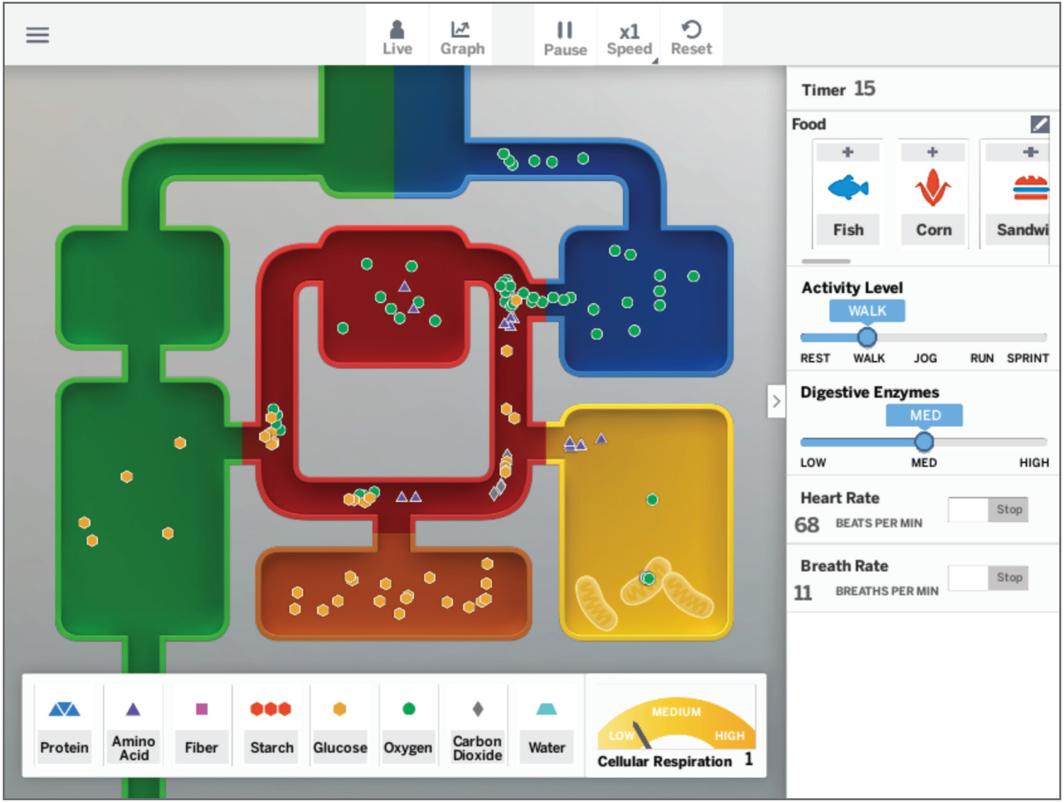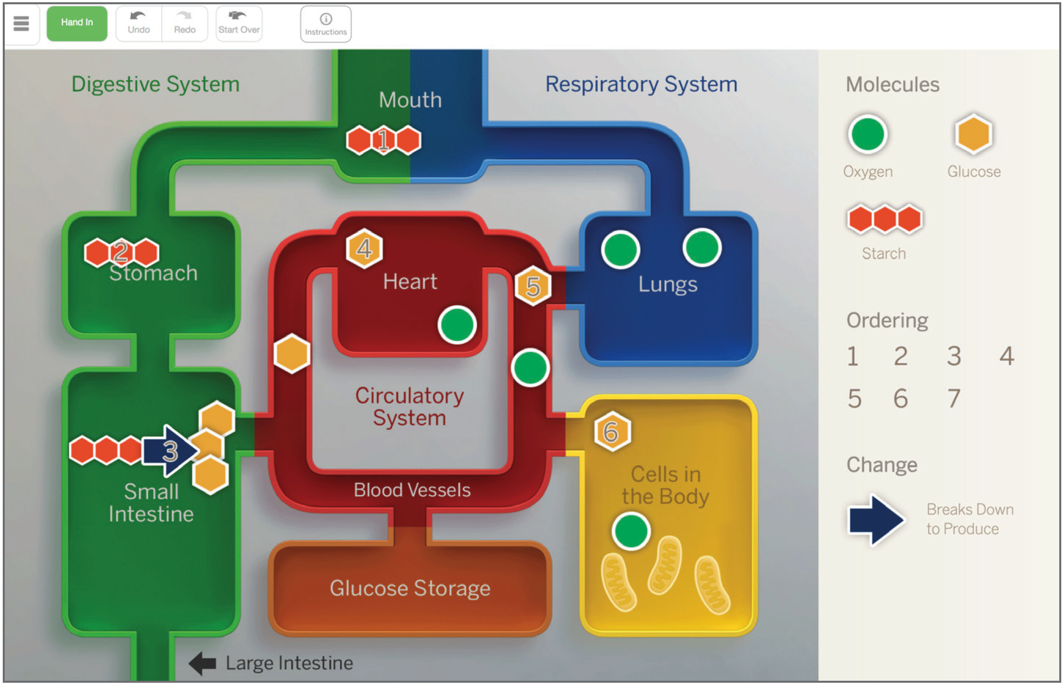Flexible, blended program
Amplify Science integrates technology thoughtfully and intentionally, not in a “tech for tech’s sake” fashion, but in ways that reflect how 21st-century scientists and engineers use technology to enable their investigations and explorations. If we want to teach students to think and act like real scientists and engineers today, we need to empower them with the opportunity to use state-of-the-art digital tools in addition to reading scientific texts, writing and discussing scientific arguments, and engaging in hands-on learning.
For teachers, the Amplify Science digital Teacher’s Guide includes detailed lesson plans, robust instructional supports, and links to all student-facing digital resources. The Teacher’s Guide for each unit is also available for download and printing from the curriculum website, and can also be professionally printed by Amplify.
For students, Amplify Science builds the use of technology as part of the blended learning model over time, from kindergarten through eighth grade. Students record notes and observations in their print Investigation Notebooks. Digital practice apps and simulations are available across grades to support and advance the learning objectives by giving students opportunities to analyze data, visualize phenomena, and share their thinking. In contrast to more limited sims available on the internet and in other programs, Amplify Science simulations are highly interactive microworlds that are carefully aligned with each unit’s learning progression and allow multiple levels of investigation and exploration. Students also have access to LHS-authored books in both print and digital texts.
Print supports make it possible to teach and learn offline for the vast majority of activities, even where the program features more digital enhancements. Amplify Science is designed to reflect how 21st-century scientists and engineers actually work. It is a flexible, blended program that can be easily implemented in a range of technology environments and adapted to teachers’ different needs, meeting every district and school where they are and partnering to support them in moving where they wish to be.
Student-facing technology
Grades 6–8
The gradual increase in the use of student-facing technology continues into grades 6–8, when students have the opportunity to use digital tools in approximately 50 percent of lessons— and in schools that have 1:1 device programs, students can use their devices daily. At this level, students have access to their own accounts and have more agency within the program. Middle school students use technology to access robust digital simulations, modeling tools, design tools, and many of their assessments. For example, in the middle school Metabolism unit, students use the Metabolism Simulation to explore how molecules from food and air travel between the body’s systems:

Metabolism simulation
In a later lesson, they use the digital Modeling Tool to develop their first model to demonstrate the path molecules from food take through the body and into a cell:

Metabolism modeling tool
In addition to the powerful Simulations and modeling tools, students who have access to devices in grades 6–8 have a suite of other digital tools at their disposal, as well, including:
- Student view of the curriculum website: The curriculum website hosts all lesson instructions, media, links to digital Simulations, science articles, assessments, and more, and is the primary tool open during class time when students have devices. The curriculum website is accessible from any of the supported devices (see Resources section for information), from any location, making it a convenient resource for students. Much of the content students engage with online are also well suited to being completed in the option paper-based Investigation Notebooks, however, and do not require devices.
- Media: Opening each unit, a video introduces students to their scientist or engineer role and to the overarching real-world, 21st-century problem they will be investigating over the course of the unit. Amplify Science is proud to represent and feature a diverse range of people in our media and program visuals, including women and men from different demographic groups.
- Science articles: Articles are available online for both students and teachers, and teachers also have the option to download, print, and distribute a PDF of them for offline access.The articles are also included in the pre-printed Investigation Notebooks with Article Compilations for each unit. When articles are accessed online, students have the ability to highlight with five different colors, add notes and annotations (which are saved to that student’s account), copy/paste them, and hand in those highlights and annotations to the teacher. In addition, when vocabulary terms appear in an article, students have the ability to access in-context definitions (and the Spanish translation) by simply clicking the vocabulary word.
- Multilingual glossary: All content-area vocabulary words in 10 languages, including: Spanish, French, Portuguese, Russian, Mandarin, Vietnamese, Haitian-Creole, Tagalog, Arabic, and Urdu. The multilingual glossary is available in PDF and is available to both students and teachers.
Alternative for classrooms without student-facing technology
Knowing that infrastructure and technology resources vary widely within and across districts, Amplify Science was designed to work effectively in a range of settings. We encourage schools to adapt the materials as necessary to meet their context and the needs of their students. In the case of technology use, if student devices are not available, the benefits of the digital tools can be achieved through strategic use of the teacher device. For example:
- If no student devices are available, the teacher can project the digital tool to the class. The teacher can then “drive” the digital tool herself, or invite students to “drive” orally or directly, by using the teacher’s device.
- If only a few (or no) student devices are available, the teacher can invite groups up in shifts, giving each group a chance to interact with the digital tool on the teacher’s device while the remaining students work on other activities.
- If a school computer lab is available, the teacher can reserve the computer lab for lessons that include digital tools. For these purposes, teachers can refer to each unit’s Materials and Preparations document to see which lessons include activities that call for student-facing technology.
Each of these options can provide investigation and sensemaking opportunities and support the fruitful conversations that are most crucial for student learning. Regardless of the implementation option you choose, your students will be empowered to collaboratively visualize otherwise invisible scientific phenomena in new and exciting ways.